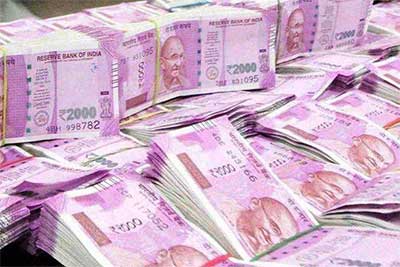Relevance: GS-3: Indian Economy and issues relating to planning, mobilization of resources, growth.
Key Phrases: Currency in Circulation, DD, Time deposits, M0, M1, M2, M3 and M4.
Why in News?
- A year after the Covid-19 pandemic led to a surge in demand for cash, the growth in currency in circulation (CiC) has declined as of November this year if the latest data from the Reserve Bank of India and the Finance Ministry is any indication.
What Is Currency in Circulation?
- Currency in circulation refers to the amount of cash–in the form of paper notes or coins–within a country that is physically used to conduct transactions between consumers and businesses.
- Currency in circulation is all of the money that has been issued by a country's monetary authority, minus cash that has been removed from the system. Currency in circulation represents part of the overall money supply, with a portion of the overall supply being stored in checking and savings accounts.
Currency in Circulation in Economy:
- Currency notes in circulation maintained an upward curve last fiscal even five years after demonetisation, albeit at a slower pace, even as digital payments continue to grow in popularity. More and more people are choosing cashless payment modes, but that has not lessened the preference for cash yet.
- According to the latest Reserve Bank of India (RBI) data, in value terms, the notes in circulation (NIC) rose from ₹17.74 lakh crore on November 4, 2016, to ₹29.17 lakh crore on October 29, 2021. They grew by ₹2,28,963 crore on October 29, 2021, from ₹26.88 lakh crore as on October 30, 2020. The year-on-year increase on October 30, 2020, was ₹4,57,059 crore. The data revealed the year-on-year increase in NIC on November 1, 2019, was ₹2,84,451 crore.
- The banknotes in circulation had increased by 16.8 per cent and 7.2 per cent in value and volume, respectively, during 2020-21. They had registered a rise of 14.7 per cent and 6.6 per cent, respectively, during 2019-20.

Money supply:
- The money supply is all the currency and other liquid instruments in a country's economy on the date measured. The money supply roughly includes both cash and deposits that can be used almost as easily as cash.
- There are several standard measures of the money supply, including the M0, M1, M2, M3 and M4.
- Reserve Money (M0): It is also known as High-Powered Money, monetary base, base money etc. M0 = Currency in Circulation + Bankers’ Deposits with RBI + Other deposits with RBI. It is the monetary base of economy.
- Narrow Money (M1): M1 = Currency with public + Demand deposits with the Banking system (current account, saving account) + Other deposits with RBI
- M2 = M1 + Savings deposits of post office savings banks
- Broad Money (M3): M3 = M1 + Time deposits with the banking system
- M4 = M3 + All deposits with post office savings banks
Factors behind cash in circulation:
- Multiple factors can influence the amount of cash in circulation:
- Economic factors such as GDP growth, inflation or an economic crisis.
- Things or people that store or hold cash. This includes the country’s population, tourists, students and other overseas visitors as well as physical things such as ATMs, cash recycling machines, cash registers and bank branches.
- Alternative payment methods like credit cards, debit cards, mobile payments and digital currencies also affect cash in circulation.
- Major events and political changes for example natural disasters, political elections or seasonal events such as Christmas,
Source: Indian Express
Mains Question:
Q. Why Cash in the system has been steadily rising, even though the government and the RBI have pushed for a “less cash society”, digitisation of payments and imposed restrictions on the use of cash in various transactions? Illustrate.









